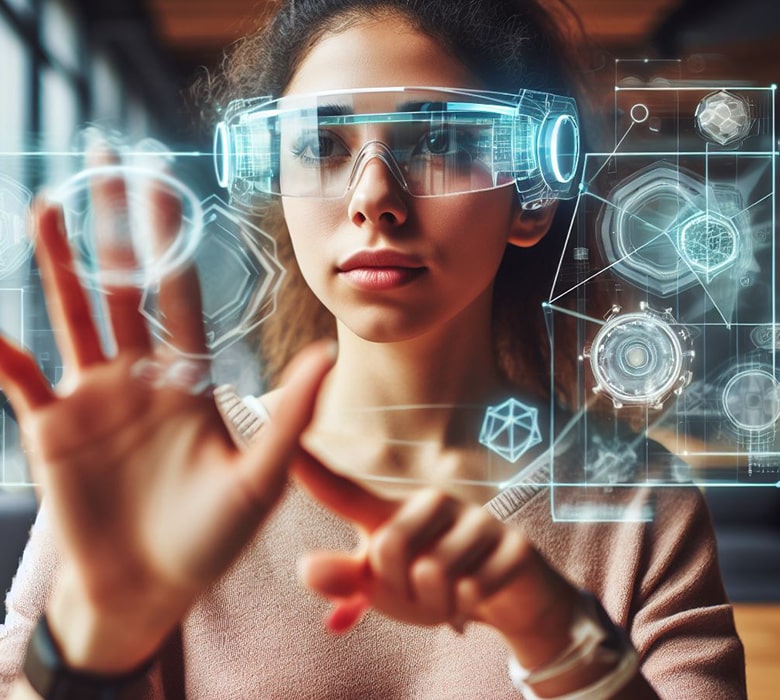Augmented reality (AR) is a technology that combines the real world and computer-generated content in an interactive way. AR can enhance the user’s perception of the environment by adding visual, auditory, haptic, or other types of information that are not normally present in the real world. AR can also provide useful information or guidance for various tasks or activities. For example, AR can help you learn about a historical site by overlaying historical images and facts on your smartphone screen, or it can help you navigate a new city by showing you directions and landmarks on your glasses.
There are different types of AR, depending on how the real and virtual worlds are combined and displayed. Some common types are:
- Marker-based AR: This type of AR uses a physical marker, such as a QR code or a printed image, to trigger the display of virtual content. The marker is detected by a camera and the virtual content is overlaid on the marker’s position and orientation. For example, you can scan a QR code on a product to see more information about it, or you can point your camera at a book cover to see a 3D animation of the story.
- Markerless AR: This type of AR does not require a specific marker, but instead uses the location and orientation of the device to display virtual content. The device can use GPS, accelerometer, gyroscope, or other sensors to determine its position and direction. For example, you can use your smartphone to see the names and distances of nearby places, or you can use your glasses to see virtual arrows pointing you to your destination.
- Projection-based AR: This type of AR projects light onto a surface to create a virtual image. The projection can be static or dynamic, and it can be interactive or not. For example, you can project a virtual keyboard onto a table and type on it, or you can project a hologram of a person and talk to them.
- Superimposition-based AR: This type of AR replaces or enhances the appearance of a real object with a virtual one. The virtual object can be partially or fully superimposed on the real one, and it can be realistic or stylized. For example, you can use your smartphone to see how a piece of furniture would look in your room, or you can use your glasses to see a virtual character interacting with your environment.
AR has many applications and benefits in various fields, such as education, entertainment, tourism, health, gaming, and more. AR can create immersive and engaging experiences that can enrich our learning, enjoyment, and productivity. AR can also help us overcome some limitations of the real world, such as distance, time, or accessibility. However, AR also has some challenges and risks, such as technical issues, privacy concerns, ethical dilemmas, and social implications. AR is still a developing technology that needs more research and innovation to reach its full potential.



